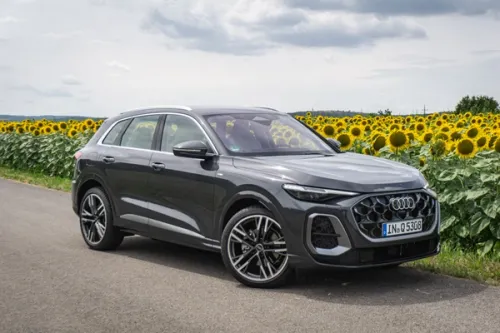New Kia Forte LPI Hybrid sedan test fleet for Europe
Kia has transported a Forte LPI Hybrid sedan to Europe for the first time to preview an extensive ‘real world' research programme it will undertake in 2010.


Although the C-segment Forte (known as Cerato is some countries) is not marketed in Europe, next year Kia is planning to operate a global test fleet of 50 Forte LPI Hybrid cars - with 36 cars allocated to testing in Europe.
In European countries with an established LPG infrastructure, the new Forte fleet will be available for media, government departments and environmental organisations to test-drive and will be used to assess the feasibility of large-scale commercialisation of LPI hybrids for the future - and to fully exploit the potential cost-savings that the price differential between LPG and gasoline may present.
This new model, which is already on sale to the public in Korea, is powered by Kia's 1.6-litre Gamma engine running on liquid petroleum gas and generating 114 hp and 148 Nm of torque.
It is mated to a hybrid powertrain with a 20 hp, 105 Nm electric motor, a 180V lithium ion polymer battery pack and a CVT gearbox (Continuously Variable Transmission), fuel-stretching Start/Stop (ISG) and a ‘regenerative braking' system.
Aerodynamic drag is reduced to just Cd 0.26, fuel consumption is lowered to 5.6 l/100 km and CO2 emissions are only 99 g/km. As LPG prices are significantly lower than gasoline in most countries, the 5.6 l/100 km figure represent a gasoline equivalent fuel economy of just 2.6 l/100 km in terms of cost, in Korea - as one example.
The price and tax applied to LPG varies across Europe and so the potential "savings" of running a car like the new Kia Forte LPI Hybrid in the future, will vary from country to country.
In everyday motoring, the new Forte LPI Hybrid promises a range of more than 808 kilometres between fill-ups.
When the Forte LPI Hybrid is moving, the LPI engine is always running. The electric motor automatically assists the LPI engine when setting off and accelerating. During steady-speed cruising only the LPI engine is used and during deceleration the ‘regenerative braking' system re-charges the car's power pack.
The regular under-seat gasoline tank is replaced by two, transversely-mounted LPG cylinders with a total capacity of 53-litres, with additional protection.
To boost its eco-performance and to visually differentiate the new Hybrid from other Forte models, the hybrid has some unique features including: lowered suspension and low-drag 15-inch alloy wheels, an ‘EcoDynamics' badge on the front grille, new-shape front fog lamps, gloss-black lower front grille, ‘Hybrid' badging on each front wing, trunk lid spoiler, LED-style rear lamp clusters and vertical rear reflectors.
Inside, a special version of Kia's ‘SuperVision' instrument cluster displays additional hybrid powertrain information and even shows an eco-guide Tree Icon which sprouts small leaves to acknowledge eco-friendly driving habits.
[B]Intensive R&D to create new Lithium ion polymer batteries[/B]
The performance of any hybrid-electric vehicle (HEV) is inextricably linked to the lifespan and storage capacity of its batteries and Kia has undertaken an intensive R&D programme to design and develop its own lithium ion polymer battery for the Forte LPI Hybrid.
Kia decided to develop a lithium polymer battery instead of relying on imported nickel hydrogen batteries. Development was jointly conducted with a local firm in Korea.
Researchers had to create a battery that could withstand the most extreme environmental conditions while delivering over 10 times the reliability and durability of lithium batteries used in small IT applications.
Furthermore, researchers had to secure battery stability in acute physical, heat and electrical conditions. Achieving cost competitiveness to counter mass-produced nickel hydrogen batteries was another formidable challenge.
Kia's researchers managed to achieve those goals and the new lithium ion polymer battery in the Forte LPI Hybrid has three times the rated voltage of a nickel hydrogen battery (one cell basis) and weighs less. Output density was raised by 65% (over nickel hydrogen batteries), while energy density was improved by about 35%.
In terms of durability and lifespan, tests have been completed to ensure the battery performs well for over 300,000km. To address the important issue of safety, a four-level safety net was created encompassing a vehicle controller, battery controller, secure pack structure and the cell's safety design.
Kia Forte LPI Hybrid is the world's first application of lithium ion polymer batteries, and Kia has secured leading technology for plug-in hybrid and electric vehicles, while preparing the foundation to become a prominent presence in the eco-friendly vehicle market of the future.
[IMG]http://www.oneshift.com/showroom/uploadimages/resized-20090922221115336.jpg[/IMG]
Credits: JRC


Get the Best Price for your used car
from 500+ dealers in 24 hours

- Convenient and Hassle-Free
- Consumer Protection
Transparent Process
With No Obligation








